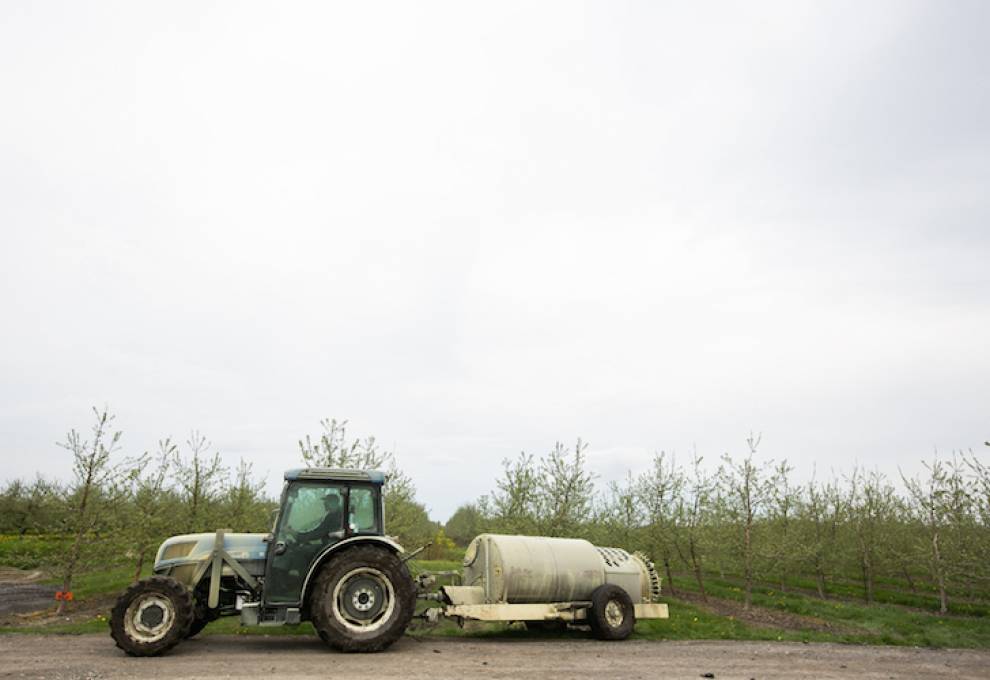
Regulation of crop protection products in Canada is an area of shared jurisdiction. The federal government’s Pest Management Regulatory Agency (PMRA) is responsible for the registration and re-evaluation process for assessing potential risks to human health and the environment. Provincial governments are responsible for regulation of the sale, use, transportation, storage, and disposal of such products. Licensing and training also fall under the purview of the provinces. Across Canada, the requirements for use and administration of crop protection products are handled quite differently as a result.
All provinces aside from Ontario rely on a federal classification system based on the PMRA-approved product label to apply their provincial regulations. The federal classification system reflects the intended use type and hazard rating of a product. Canada’s Pest Control Products Act assigns products into four classes: domestic, commercial, restricted, or manufacturing. Domestic products are intended for home use, are packaged in smaller containers, and can be used safely with limited or no personal protective equipment (PPE).
Commercial class products are designed for use in agriculture or other commercial activities, may contain more concentrated formulations or a larger container size, and require additional PPE for their use. Restricted class products are deemed to be higher hazard (more hazardous?) by the federal Minister of Health and have additional limitations over commercial products. Manufacturing class products are intended for use in making other products and not directly used in crop protection. These classes form the basis for provincial regulation across Canada – except in Ontario.
Before a federally registered crop protection product can be sold or used in Ontario, currently, it must be classified under the provincial Pesticides Act. The provincial regulatory system is currently based on a separate Ontario-specific classification process. A company wishing to register a new product in Ontario must first apply to have their product classified. This does not occur in any other province. Secondly, the Ontario classification system takes the four federal classes and creates a complex 12- class system. Thirdly, the process requires an unusual step of requiring an outside committee – the Ontario Pesticide Advisory Committee (OPAC) – to provide the initial classification recommendation for new products. Finally, any product containing a new active ingredient then needs to be posted to the Environmental Registry of Ontario for a minimum of 30 days of public consultation prior to final approval.
Ontario’s extended process ultimately has no impact whatsoever on human health or the environmental safety of any product. This was already determined by PMRA, which prescribed any mitigation requirements, PPE, and approved use conditions during their rigorous review – with their own public consultation period. The consequences of Ontario’s inefficient system are slow integration of new federally registered products within the provincial regulations. Growers in Ontario have been unable to access new crop protection products already approved by PMRA because the provincial classification process is not completed. When this delay happens just before or during the growing season, growers can miss out on an entire year of use that would be available in any other province. If the goal of the Pesticides Act is to protect human health and the environment, what is this extraneous classification process accomplishing? Nothing.
Fortunately, Ontario Bill 132, Better for People, Smarter for Business Act, 2019 introduced in the legislature when the government resumed this fall on October 28, included important amendments in the regulation of crop protection products. The proposed amendments to the Pesticide Regulation include the elimination of Ontario’s duplicate and inefficient classification system. Ontario would follow all other provinces and adopt the federal classifications. No application to approve a product in Ontario would be required, it would simply automatically be processed following along the federal system. Finally, no separate second public consultation period for new active ingredients would be required. The public and government of Ontario still have the opportunity to comment during PMRA’s review process.
The Bill was carried on its second reading at Queen’s Park on November 7th and has been referred to Standing Committee on General Government. If given Royal Assent, it would be expected these changes will occur sometime in 2020. Red tape policies without any particular reason for their existence are often few and far between. The adoption of the federal classifications will absolutely not change how crop protection products get used in the field or greenhouse. This is simply bureaucratic process about when these products can get to the grower. The proposed streamlining enables timely access for farmers to the newest tools without compromising on protection of human health or the environment. A true win-win.

Add new comment